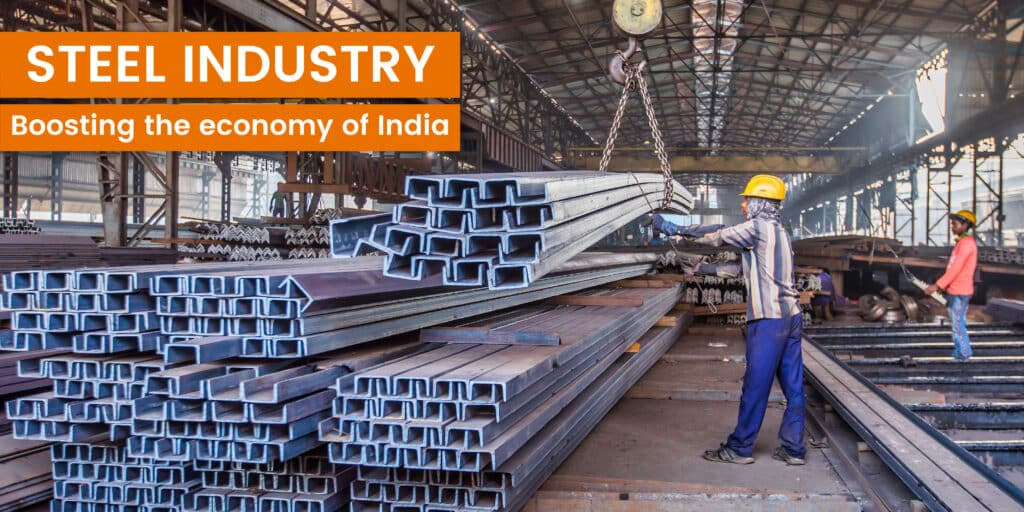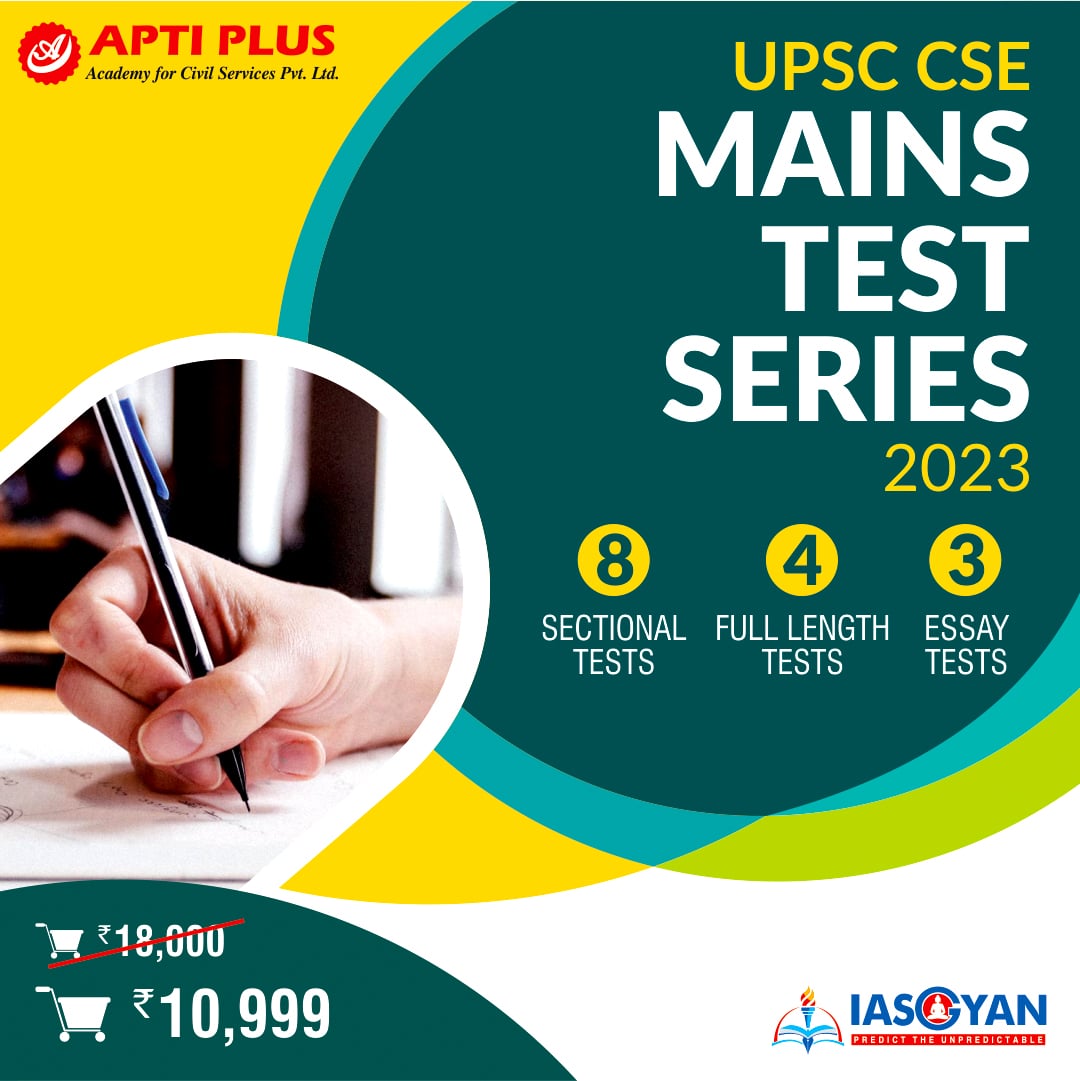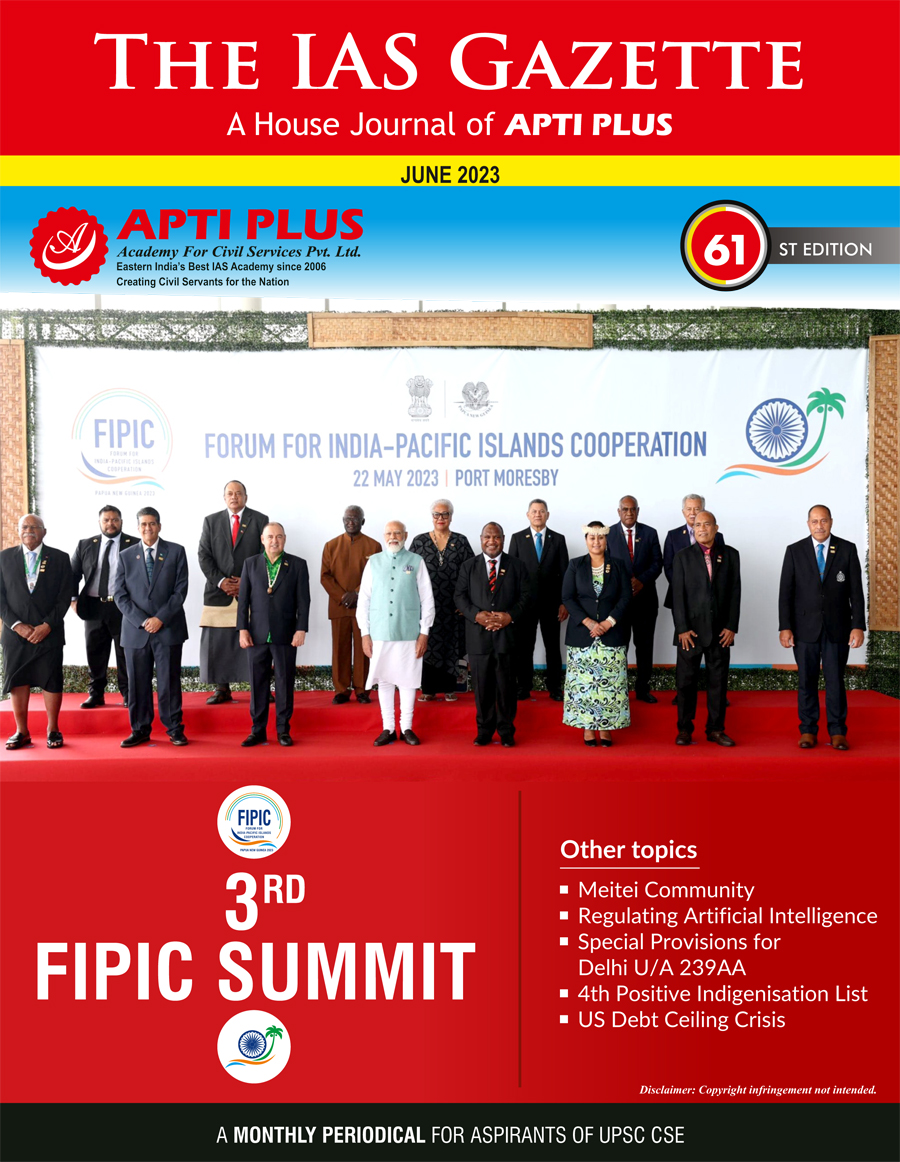
Copyright infringement not intended
Context: The Union Minister of Steel and Civil Aviation held a press conference on the theme 9 years of Government's "Seva, Sushasan and Gareeb Kalyan" focusing on the Steel sector.
Details
- The Union Minister began his speech by emphasizing the role of the Steel sector in advancing the country's progress and development. “India has become the World's 2nd Largest Producer of Crude Steel, overtaking Japan in 2018”, he said, while noting the remarkable growth achieved by India’s steel industry.
- He also highlighted the achievements of the government in the last 9 years, stating that India has emerged as a net exporter of steel with an export of 6.72 MT of finished steel against the import of 6.02 MT in 2022-23.
Steel Sector in India
About
- The first modern steel plant in India was established by Jamsetji Tata in 1907 at Sakchi, which later became Jamshedpur. Since then, the steel sector has grown significantly, with several public and private players entering the market.
- India became the third-largest producer of raw steel in 2016 and the second-largest producer of crude steel in 2018.
- In FY22, India produced 133.596 MT of crude steel and 120.01 MT of finished steel. The steel sector is governed by the Ministry of Steel, which formulates policies and plans for its development.
The Indian steel sector is characterized by several features, such as:
Availability of raw materials
- India has abundant reserves of iron ore, coal and other minerals that are essential for steel production. India is also the largest producer of sponge iron in the world.
Cost-effective labour
- India has a large and skilled workforce that provides low-cost labour for the steel industry. India also has a strong engineering and technical base that supports innovation and quality improvement.
Modern and state-of-the-art facilities
- The Indian steel sector has invested in the modernization and upgradation of its plants and equipment to enhance efficiency and productivity. The sector has also adopted advanced technologies such as electric arc furnaces, continuous casting machines, blast furnace gas recovery systems, etc.
Diversified product portfolio
- The Indian steel sector produces a wide range of products, such as hot and cold rolled coils, sheets, plates, bars, rods, wires, pipes, tubes, etc. The sector also caters to various end-use industries such as construction, railways, automobiles, consumer durables, etc.

The Indian steel sector has several significances for the country's economy and society, such as:
Contribution to GDP
- The steel sector contributes about 2% to India's GDP and accounts for about 7% of its industrial output. The sector also generates employment for about 2.5 million people directly and indirectly.
Support to infrastructure development
- The steel sector plays a vital role in building and maintaining India's infrastructure such as roads, bridges, dams, airports, ports, etc. The sector also supports the development of renewable energy sources such as solar and wind power.
Enhancement of national security
- The steel sector provides strategic materials for India's defence and aerospace sectors such as armour plates, bulletproof vests, missiles, rockets, satellites, etc. The sector also helps in reducing India's dependence on imports for critical defence items.
Promotion of social welfare
- The steel sector contributes to various social welfare initiatives such as education, health care, skill development, environmental protection, etc. The sector also supports various corporate social responsibility (CSR) activities such as community development, women empowerment, rural upliftment, etc.
The government has taken several steps to support and promote this sector, such as:
Steel Scrap Recycling Policy
- The Steel Scrap Recycling Policy, which was announced by the Government of India in November 2019, aims to promote the scientific processing and recycling of ferrous scrap from various sources, such as end-of-life vehicles (ELVs), white goods, construction and demolition waste, etc.
- The policy provides guidelines for setting up metal scrapping centres in India, which will ensure safe and environmentally sound handling of scrap materials.
- It envisages a responsive ecosystem involving various stakeholders, such as aggregators, dismantling and scrap processing centres, manufacturers, owners and government authorities.
- It is expected to reduce the dependence on imports of scrap and enhance the availability of quality scrap for steel production in India.
Vehicle scrapping centers
- One of the key features of the policy is the establishment of vehicle scrapping centres across the country, which will facilitate the collection and recycling of ELVs.
- The Union Minister has recently inaugurated many centres in different cities and has announced that more centres are planned to start their operations soon. The minister has also highlighted the benefits of using ELVs as raw material for steel production, as it will save energy, reduce emissions and conserve natural resources.
- The policy encourages state governments and the private sector to participate in this initiative and create a circular economy for steel.
National Steel Policy 2017
- The National Steel Policy 2017 (NSP 2017) is a strategic plan to boost the growth and development of the steel industry in India. It was launched by the Minister of Steel in 2017.
- The policy aims to create a "technologically advanced and globally competitive steel industry that promotes economic growth".
- Some of the key objectives of the policy are to achieve a crude steel capacity of 300 million tonnes per annum (MTPA) and a crude steel production of 255 MTPA by 2030-31.
- The policy also envisages increasing the per capita steel consumption to 158 kg by 2030-31, from the current level of 61 kg.
- It seeks to enhance the quality and variety of steel products, especially for strategic sectors like defence, railways and automobiles.
DMI & SP Policy
- One of the initiatives taken under the policy is the Policy for providing preference to Domestically Manufactured Iron and Steel Products (DMI & SP Policy) in government procurement.
- This policy aims to encourage domestic steel production and reduce imports. According to the Minister, this policy has resulted in import substitution of ₹34,800 Crore approximately.
Productivity Linked Incentive Scheme (PLI)
- The PLI Scheme is a key initiative to boost the domestic production of speciality steel and create a competitive edge for Indian steel in the global market. Speciality steel is used in various sectors such as defence, aerospace, automobile, railways, etc. and has high-value addition and export potential.
- The minister announced that 57 MoUs have been signed with 27 companies under the scheme, which will bring in an investment of ₹30,000 crore and create 24.7 million tonnes of additional downstream capacity.
- The scheme will also generate 55000 new jobs in the steel sector and increase the per capita steel consumption in the country.
‘Brand India’ labelling
- The minister also emphasized the need for ‘Brand India’ labelling to showcase the quality and standards of Indian steel products. He said that the Ministry of Steel has launched a Made in India branding campaign for steel and has collaborated with major steel producers for this purpose.
- The campaign aims to increase the awareness and preference for Indian steel among domestic and international customers and enhance the brand value of the Indian steel industry.
- The ministry has also identified 22 critical infrastructure gaps on the PM Gati Shakti National Master Plan Portal and is working with other ministries such as the Ministry of Road Transport and Highways, Ministry of Railways, Ministry of Ports, Shipping and Waterways to address them. The infrastructure gaps include issues such as connectivity, logistics, land acquisition, power supply, etc.
Decarbonization in steel production
- The minister further highlighted the efforts of the ministry to promote decarbonization in steel production and reduce greenhouse gas emissions. He said that the ministry has formed 13 task forces to devise action plans for various aspects of green steel production such as carbon capture and utilization, hydrogen-based steel making, waste heat recovery, renewable energy integration, etc.
- He said that the ministry is engaging with stakeholders from the industry and other ministries such as the Ministry of Environment, Forests & Climate Change (MOEFCC), Railways, Power, etc. to implement the action plans and achieve the target of net zero emissions by 2070.
The Indian steel industry faces several challenges that need to be addressed to secure a robust and sustainable future. Some of these challenges are:
Global pressure
- The Indian steel industry is vulnerable to cheaper imports from countries like China, Vietnam and Indonesia, which have excess capacity and lower production costs.
- The industry also faces the impact of protectionist measures and trade wars initiated by some of the major steel-consuming countries, such as the US and the EU.
- These factors have affected the profitability and competitiveness of Indian steel producers, who have to deal with low prices and high tariffs in the global market.
Domestic demand
- The domestic steel consumption in India has been sluggish due to the slowdown in key sectors such as infrastructure, construction, automotive and engineering.
- The COVID-19 pandemic has further worsened the situation by disrupting the supply chains and reducing the demand for steel products.
- The Indian steel industry needs a strong stimulus from the government to revive the demand and boost investment across sectors.
Capital investment
- The iron and steel industry requires large capital investment for setting up new plants, expanding existing ones, upgrading technology and improving efficiency. However, the Indian steel industry faces a lack of adequate capital due to high-interest rates, low credit availability, delayed project approvals and land acquisition issues.
- Many of the public sector integrated steel plants have been established with the help of foreign aid, but they suffer from poor performance and low productivity.
Environmental concerns
- The steel industry is one of the most energy-intensive and polluting industries in the world. It consumes a large amount of coal, iron ore, water and other natural resources, and emits greenhouse gases, particulate matter and other pollutants.
- The Indian steel industry needs to adopt cleaner and greener technologies and practices to reduce its environmental impact and comply with the regulatory norms.
- The industry also needs to explore alternative sources of raw materials, such as scrap metal, which can reduce its dependence on imports and save costs.

The way forward for the Indian steel industry is to leverage its strengths and overcome its weaknesses by adopting a holistic approach that encompasses policy support, technological innovation, operational excellence and environmental responsibility. Some of the possible steps that can be taken are:
Policy support
- The government should provide policy support to the steel industry by creating a favourable business environment, facilitating ease of doing business, providing tax incentives, ensuring fair trade practices, implementing infrastructure projects, promoting domestic demand and enhancing export competitiveness.
- The government should also implement the National Steel Policy 2017, which aims to increase the steel production capacity to 300 million tonnes per annum (MTPA) by 2030-31.
Technological innovation
- The steel industry should invest in technological innovation to improve its product quality, diversify its product portfolio, reduce its production costs, increase its energy efficiency and reduce its carbon footprint.
- The industry should adopt advanced technologies such as electric arc furnaces (EAFs), direct reduced iron (DRI), continuous casting (CC), hot rolling (HR), cold rolling (CR), coated products (CP) and special steels (SS).
- The industry should also embrace digital transformation by using emerging technologies such as artificial intelligence (AI), machine learning (ML), the Internet of Things (IoT), blockchain and cloud computing.
Operational excellence
- The steel industry should strive for operational excellence by optimising its processes, enhancing its productivity, improving its quality control, reducing its wastage, increasing its automation and ensuring its safety.
- The industry should benchmark its performance against global best practices and standards, such as ISO 9001 (quality management), ISO 14001 (environmental management) and OHSAS 18001 (occupational health and safety management).
Environmental responsibility
- The steel industry should act as a responsible corporate citizen by adopting sustainable development practices that balance economic growth with social welfare and environmental protection.
- The industry should implement various initiatives such as green manufacturing, circular economy, waste management, water conservation, renewable energy, carbon capture and storage (CCS) and corporate social responsibility (CSR).
Conclusion
- The Indian steel industry has a huge potential to contribute to the nation's growth and development. By overcoming its challenges and embracing its opportunities, the industry can secure a robust and sustainable future for itself and for the country.
Must Read Articles:
India’s Manufacturing Sector and PMI: https://www.iasgyan.in/daily-current-affairs/indias-manufacturing-sector-and-pmi
|
PRACTICE QUESTION
Q. The steel sector is a vital part of India's economy, contributing to its industrial growth, employment generation and foreign exchange earnings. However, the sector also faces several challenges, such as environmental concerns, high production costs, low innovation and competitiveness, and trade barriers. How can the steel sector overcome these challenges and enhance its role in India's development? What are the best practices and policies that can support the sector's growth and sustainability?
|
https://pib.gov.in/PressReleasePage.aspx?PRID=1930585




